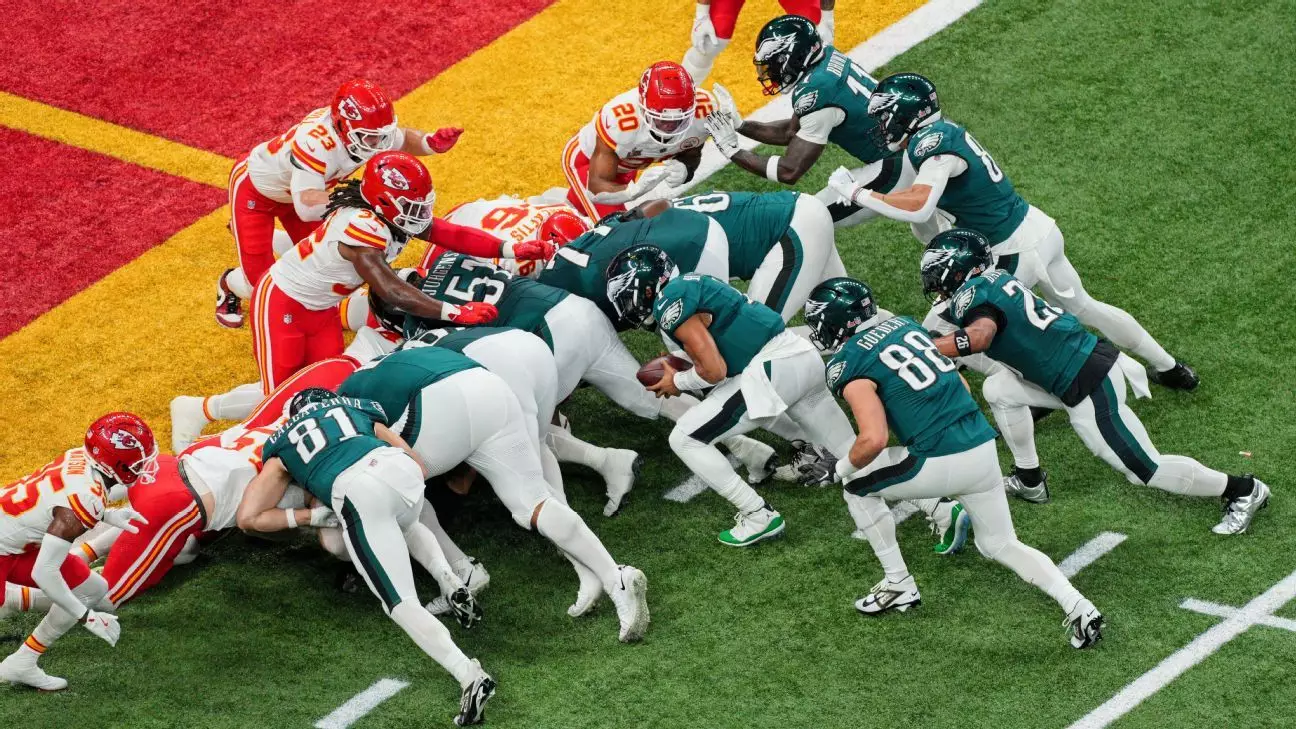In recent discussions dominating the National Football League (NFL), a specific play known as the “tush push” has garnered attention and sparked controversy. This tactic sees players arranged behind the quarterback, propelling him forward during a quarterback sneak. As outlined by Troy Vincent, the NFL’s Executive Vice President of Football Operations, one unidentified team has moved to propose a ban on this practice. Such a development has heightened the discourse surrounding the play’s efficiency and justification within the league, raising crucial questions about fairness and competitive integrity.
At the upcoming spring owners’ meeting in Palm Beach, Florida, NFL owners will vote on this rule proposal. However, for the proposal to pass, a significant majority is required; specifically, 24 out of 32 owners must vote in favor. This threshold is indicative of the complexities involved in amending league rules, as many teams have differing opinions shaped by their unique strategies and personnel. The proposal’s origin remains a mystery, revealing the nuanced dynamics of NFL politics, where teams may be reluctant to publicly stake claims on such contentious issues.
The “tush push” has been a focal point of strategic discussions within the NFL landscape, particularly with the Philadelphia Eagles and the Buffalo Bills leading its execution. According to data from ESPN Research, these two teams combined have utilized the play for a staggering 163 instances over the past three seasons, eclipsing all other teams collectively. This efficacy further complicates the situation, illustrating a stark contrast between teams that have successfully adopted the play and those that have not. With an impressive success rate of 87% for making first downs or scoring touchdowns through the play, questions arise regarding the implications of such an advantage in a league that thrives on competition.
The discourse surrounding the potential ban of the “tush push” extends beyond simple statistics; it reaches into the philosophy of how football is played. Advocates for the ban argue that it promotes a style of play that risks player safety, particularly relating to injuries sustained in pile-ups following such short yardage attempts. On the other hand, proponents insist that the play is merely a reflection of strong execution and coaching. As Philadelphia Eagles head coach Nick Sirianni noted, the distinctive success of the play for the Eagles should not mandate a blanket alteration of the rules beneficial to their play style.
In this tug-of-war, Troy Vincent emphasized the call for an evaluation of the play, hinting at broader concerns that may exist within the competition committee. These apprehensions could stem from the change in the game’s natural balance of power. As teams like the Eagles have demonstrated that they can master this tactic, there is an inherent risk of creating disparities among teams based not just on resources or skill but on legislative measures intended to constrain success.
The upcoming vote among NFL owners will serve as a pivotal moment, potentially altering the landscape of tactical strategies employed in the league. Should the proposal pass, it stands to redefine the parameters of quarterback sneaks and fundamentally shift how teams approach short-yardage situations. Conversely, if it is dismissed, it may reinforce the notion that success in sports lies in capabilities rather than penalizing effective strategies. Ultimately, the debate surrounding the “tush push” encapsulates the delicate balance between innovation in play design and the traditional ethos of football. As teams continue to submit their own proposals, the ongoing assessment will illuminate the evolving identity of the NFL and its commitment to maintaining competitive fairness amid emerging trends.


Leave a Reply